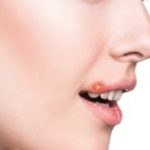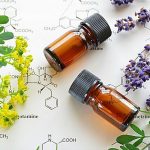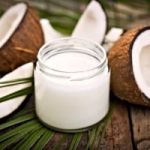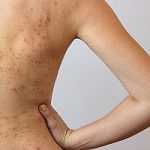Guide to Tea Tree Oil Shampoo

If you’re looking for a natural way to fight dandruff and keep your hair and scalp squeaky-clean, tea tree oil shampoo may be just what you’re looking for.
Tea tree oil has potent anti-microbial properties. The active ingredient, terpinen-4-0L has been shown to be effective against bacteria, fungi and yeasts.
In fact, researchers have recently discovered that tea tree oil is effective against antibiotic-resistant strains of bacteria such as the deadly Methicillin-Resistant Staphylococcus Areus (MRSA).
Using these specially formulated shampoos is a great way to keep your hair and scalp clean without using man-made chemicals and detergents.
Tea tree oil can also provide calming relief for improved scalp health and may even help reduce itching and dry scalp conditions.
How to Use Tea Tree Oil for Improved Hair and Scalp Health
The best way to use tea tree oil for your hair is to mix it with your regular shampoo.
Here’s a simple way to wash your hair using this healthy oil:
- Wet your hair and then pour a small amount of shampoo in your palm.
- Add a few drops of tea tree oil to the shampoo, rub your palms together to mix and then apply to your hair.
- Massage the shampoo/tea tree oil mixture through your hair. Make sure not to get any in your eyes as it may sting.
- Rinse thoroughly and then apply hair conditioner if you use one.
- Healthy Oil Tip: You may find that coconut oil is an excellent hair conditioner. Apply virgin coconut oil to your hair after the tea tree oil treatment for extra deep oil conditioning and hair moisturizing.
Using Pre-Mixed Tea Tree Oil Shampoos
While you can mix your own shampoo and tea tree oil combinations at home, you can also buy them pre-mixed.
Most of these specialty shampoos used to be only sold in health food or organic food stores, but now you can start to find them in big box retail stores.
If you are going to buy these types of shampoos, you should look at how much tea tree oil is in the shampoo since that is the active ingredient that your looking for.
Some shampoo manufacturers don’t have to list the actual dosage amounts of ingredients in their products.
The majority of ingredient labels will list the ingredients in order of how much is in the product. So for example, if 90% of the product is made up of water, then water will be listed first on the ingredient list.
So if you’re looking at a tea tree oil shampoo at your local big box store and you see that the ingredient ‘tea tree oil’ is listed at the very end of the ingredient list – that’s a warning to you that there probably isn’t very much actual tea tree oil in that particular product.
Beware of Man-Made Chemicals in Your Favorite Shampoo!
If you have sensitive skin or scalp, you may be aggravating your scalp if you use shampoos that contain certain cleansers or detergents.
One common ingredient found in many shampoos and cleansers is a chemical called sodium laurel sulphate (SLS).
SLS is a surfactant used in many cleaning operations for removing oily residues and stains.
It’s original purpose was to make cleansers more effective in commercial industries such as removing grease from engines and industrial strength cleansers. SLS is also added to shampoos and soaps to make them more sudsy and foamy.
Sodium laurel sulfate is also commonly found in toothpaste, soaps, facial cleansers and shampoos.
One of the dangers with SLS is that prolonged exposure to the skin may cause irritation; if used in toothpaste it may cause mouth ulcers and it may irritate the skin or scalp if not rinsed off completely.
Is there MIT in your Shampoo?
Another common chemical found in shampoos is called methylisothiazoline or MIT, for short.
What is MIT? This chemical is added to water-based solutions, like your shampoo, to prevent bacteria from growing.
Recent animal studies show MIT may cause allergies and nerve cell death.
So if you suffer from eczema, dry irritated scalp or skin, there could be a possibility you’re having a reaction to SLS or MIT in your soaps or shampoo. How can you know for sure? You could try switching to a chemical-free shampoo or soap for a few weeks and see if there’s any improvement in your skin.

Try Organic Shampoo for better scalp health
One of the benefits of using a tea tree oil shampoo is the oil is a natural anti-microbial so this eliminates the need for MIT in your shampoo.
The SLS may help your shampoo cut grease, but you could also use a few drops of tea tree oil to cut through the grease and reduce your exposure to this known skin irritant.
You can find all-natural organic shampoos and soaps at your local health food store. Due to the growing demand for these types of products, there are more and more online retailers that sell chemical-free shampoos and soaps.
Once you’ve found a dependable chemical-free shampoo, make sure to use a natural leave-in conditioner to ensure you protect your hair from styling tools and maximize hair moisturization and conditioning until your next shampoo sessions.
Lists of Top Selling Organic Tea Tree Shampoos
For your convenience, here is a list of a few of the most popular organic shampoos available at one of the largest online retailers.
A number of these products contain naturally-derived ingredients with no parabens or sodium lauryl sulfates.
Home Page > Tea Tree Oil Home Page > Tea Tree Oil Shampoo





